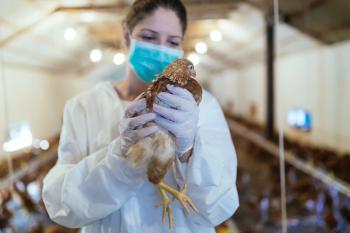
- November 2014
- Volume 1
- Issue 3
DNA Sequencing Could Lead to More Accurate Pneumonia Diagnosis
A team of researchers at George Washington University has reported that next-generation sequencing of sputum samples taken from patients in the intensive care unit can accurately identify the strain of ventilator-associated pneumonia a patient is infected with.
A team of researchers at George Washington University (GW) has reported that next-generation sequencing (NGS) of sputum samples taken from patients in the intensive care unit (ICU) can accurately identify the strain of ventilator-associated pneumonia a patient is infected with.
“Currently, patients who develop pneumonia after entering the ICU are subjected to broad-spectrum antibiotics, which adds costs, potentially increases the risk of development of antimicrobial resistance, and creates a greater likelihood of an adverse effect attributable to the antibiotics,” explained Gary Simon, MD, PhD, in a statement that accompanied publication of the study.
Simon is Walter G. Ross Professor of Medicine and director of the Division of Infectious Diseases at the GW School of Medicine and Health Sciences (SMHS), and contributor to the study.
The team’s findings, published in the Journal of Clinical Microbiology, outlined the benefits for pneumonia diagnoses of NGS, which determines the DNA sequence of a patient’s genome and microbiome.
For the study, researchers used the NGS of essentially full-length ribosomal DNA from the bronchial aspirates of intubated patients with suspected pneumonia.
Out of 61 patients, sufficient DNA could be obtained from 72% of their samples, 44% of which “yielded PCR amplimers suitable for NGS.”
“Out of 27 sequenced samples, only 20 had bacterial culture growth, while microbiological and NGS identification of bacteria coincided in 17 (85%) of these samples. Despite the lack of bacterial growth in 7 samples that yielded amplimers and were sequenced, the NGS identified a number of bacterial species in these samples,” the researchers reported.
“Overall, a significant diversity of bacterial species was identified from the same genus as the predominant cultured pathogens. The number of NGS-identifiable bacterial genera was consistently higher than identified by standard microbiological methods,” the authors found.
With this discovery, Keith Crandall, PhD, a director of the Computational Biology Institute at GW, believes the use of PathoScope, a bioinformatics tool that identifies pathogens, allows for NGS information to be analyzed faster, and increasing the speed in which a patient is diagnosed.
“This is truly ‘personalized medicine’ as we identify specific strains of bacteria infecting individual patients and provide physicians with targeted information for antibiotic treatments for each individual,” said Crandall.
Articles in this issue
about 11 years ago
New Study Provides Hope for Chronic Lyme Disease Sufferersabout 11 years ago
Diarrhea Superbug Infections Doubleabout 11 years ago
Researchers Grow Human Norovirus Cultureabout 11 years ago
Age-related Diseases Don't Occur Earlier in HIV-infected PatientsNewsletter
Stay ahead of emerging infectious disease threats with expert insights and breaking research. Subscribe now to get updates delivered straight to your inbox.































































































































































































































































































































